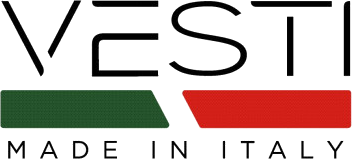Temperature and Humidity of DTF Printer Working Environment

Posted by AllDayShirts on to Printing Business Tips, Printing Techniques., Product Guides
Temperature and Humidity of DTF Printer Working Environment
Direct-to-Film (DTF) printing has revolutionized the textile industry by providing an efficient and versatile way to print designs on various fabrics. However, achieving high-quality prints with DTF technology depends significantly on the working environment, particularly temperature and humidity. Understanding and controlling these factors can prevent common printing issues and ensure consistent, high-quality output. This blog delves into the ideal temperature and humidity conditions for DTF printers, their effects on the printing process, and practical tips for maintaining an optimal environment.
Importance of Temperature and Humidity in DTF Printing
Why Temperature Matters
Temperature plays a crucial role in the DTF printing process for several reasons:
1. Ink Performance: DTF inks are sensitive to temperature changes. Too high or too low temperatures can affect the viscosity of the ink, leading to printing issues such as clogging, smudging, or uneven application.
2. Adhesive Powder Activation: The adhesive powder used in DTF printing needs to be activated at a specific temperature range to ensure it properly bonds with the fabric. Incorrect temperatures can result in poor adhesion, causing designs to peel off or crack.
3. Printer Functionality: Printers are designed to operate within specific temperature ranges. Extreme temperatures can cause mechanical failures or reduce the lifespan of the printer components.
Why Humidity Matters
Humidity levels also significantly impact the DTF printing process:
1. Paper Quality: DTF printing involves transferring designs onto a film, which can be highly sensitive to humidity. Excess moisture can cause the film to warp, curl, or become sticky, leading to printing errors.
2.Ink Drying: Proper humidity levels ensure that the ink dries at an optimal rate. Too much humidity can slow down the drying process, causing smudges, while too little can lead to ink drying too quickly, clogging the print heads.
3. Static Electricity: Low humidity levels can increase static electricity, which can interfere with the printing process and cause issues such as misalignment or smudging of the design.
Optimal Temperature and Humidity Conditions for DTF Printing
Ideal Temperature Range
The recommended temperature range for DTF printing typically falls between 20°C to 25°C (68°F to 77°F). Maintaining this range ensures:
- Stable Ink Viscosity: Within this temperature range, DTF inks maintain the proper viscosity, ensuring smooth and consistent printing.
- Efficient Powder Activation: The adhesive powder activates efficiently, ensuring strong adhesion between the design and the fabric.
- Printer Longevity: Operating within this range reduces the risk of mechanical issues and extends the life of the printer components.
Ideal Humidity Range
The ideal humidity level for DTF printing is between 40% to 60% relative humidity (RH). This range helps to:
- Prevent Film Warping: Ensures that the film remains flat and stable, reducing the risk of printing errors.
- Optimal Ink Drying: Balances the ink drying process, preventing smudging or clogging.
- Reduce Static Electricity: Minimizes static build-up, ensuring smooth and accurate printing.
Consequences of Deviating from Optimal Conditions
Effects of High Temperature
Operating a DTF printer in high temperatures (above 30°C or 86°F) can lead to several issues:
- Ink Thinning: High temperatures can cause the ink to become too thin, leading to over-saturation of the film and smudging of the design.
- Adhesive Problems: The adhesive powder may activate prematurely, resulting in poor adhesion and peeling of the design.
- Printer Overheating: Prolonged exposure to high temperatures can cause the printer components to overheat, potentially leading to mechanical failures.
Effects of Low Temperature
Low temperatures (below 18°C or 64°F) can also pose challenges:
- Ink Thickening: The ink may become too thick, causing clogging of the print heads and uneven printing.
- Delayed Powder Activation: The adhesive powder may not activate properly, resulting in weak adhesion and durability issues.
- Mechanical Issues: Cold temperatures can make the printer components more brittle, increasing the risk of damage.
Effects of High Humidity
Excessive humidity levels (above 70% RH) can negatively impact the DTF printing process:
- Film Warping: The film can absorb moisture, leading to warping and misalignment during printing.
- Ink Drying Delays: High humidity slows down the ink drying process, increasing the risk of smudging and defects.
- Mold Growth: Prolonged exposure to high humidity can promote mold growth on the film and printer components, affecting print quality and hygiene.
Effects of Low Humidity
Low humidity levels (below 30% RH) can also cause problems:
- Static Electricity: Increased static electricity can interfere with the printing process, causing misalignment and smudging.
- Ink Drying Too Quickly: Rapid drying of the ink can clog the print heads, leading to printing errors and maintenance issues.
- Film Brittleness: Low humidity can make the film more brittle, increasing the risk of cracking and damage.
Practical Tips for Maintaining Optimal Conditions
Temperature Control
1. Climate Control Systems: Invest in air conditioning or heating systems to maintain a stable temperature range in your printing environment.
2. Temperature Monitoring: Use digital thermometers to regularly monitor the temperature and ensure it stays within the optimal range.
3. Printer Placement: Position your DTF printer away from direct sunlight, heat sources, or cold drafts to maintain a consistent temperature.
Humidity Control
1. Humidifiers and Dehumidifiers: Use these devices to maintain the optimal humidity levels in your printing environment.
2. Humidity Monitoring: Install hygrometers to continuously monitor the humidity levels and adjust as necessary.
3. Proper Ventilation: Ensure good ventilation in your workspace to prevent excess moisture buildup and maintain air quality.
Environmental Maintenance
1. Regular Cleaning: Keep your printing environment clean and free from dust and debris, which can affect both temperature and humidity levels.
2. Routine Maintenance: Perform regular maintenance on your DTF printer to ensure all components are functioning correctly and are not contributing to temperature or humidity issues.
3. Insulation: Properly insulate your workspace to prevent external temperature and humidity fluctuations from affecting your printing environment.
Additional Considerations
Seasonal Adjustments
Different seasons can bring significant changes in temperature and humidity levels. During summer, the heat and humidity can rise, while winter can bring cold and dry conditions. Adjust your climate control measures accordingly:
- Summer: Increase air conditioning use and employ dehumidifiers to manage heat and humidity.
- Winter: Use heaters and humidifiers to counteract the cold and dry air.
Geographic Considerations
Your geographic location can also influence the temperature and humidity levels in your workspace. Areas with tropical climates may require more robust dehumidification systems, while arid regions might need additional humidification.
Emergency Preparedness
Have contingency plans in place for unexpected temperature or humidity fluctuations. Power outages, HVAC failures, or extreme weather conditions can all impact your printing environment. Backup generators, portable climate control devices, and protective storage solutions for your materials can help mitigate these risks.
Conclusion
Maintaining the ideal temperature and humidity conditions is crucial for achieving high-quality results in DTF printing. By understanding the impact of these environmental factors and implementing practical measures to control them, you can ensure consistent, vibrant, and durable prints. Regular monitoring, seasonal adjustments, and proactive maintenance will help you create an optimal working environment for your DTF printer, leading to improved efficiency and product quality.
By paying close attention to these details, you can maximize the performance of your DTF printing operations and deliver exceptional results to your customers.
- Christmas Fun Starts with Custom Hoodies & Crewnecks Using DTF Printing
- Thanksgiving DTF Apparel: Create Cozy, Colorful, and Custom Looks This Holiday Season
- Halloween DTF Apparel: Create Spooky Custom Looks with Jerzees 562 and 996 from AllDayShirts.com
- The Ultimate Guide to Soft Style Gildan Fleece: Comfort, Style, and Value for Every Wardrobe
- Why Acrylic Beanies Are a Unique Challenge
- Jerzees Fleece: The Perfect Blend of Comfort, Style, and Value
- Back-to-School DTF Printing: The Ultimate Guide to Custom Apparel for Students and Schools
- Image Enhancer for DTF Printing: How to Unlock Sharper, Brighter, and More Professional Prints
- How to Apply UV DTF: The Complete Step-by-Step Guide
- Introducing Print-on-Demand Hats: Featuring the Richardson 112, Otto 5-Panel Mid Profile Cap & High Crown Mesh Back Trucker



























